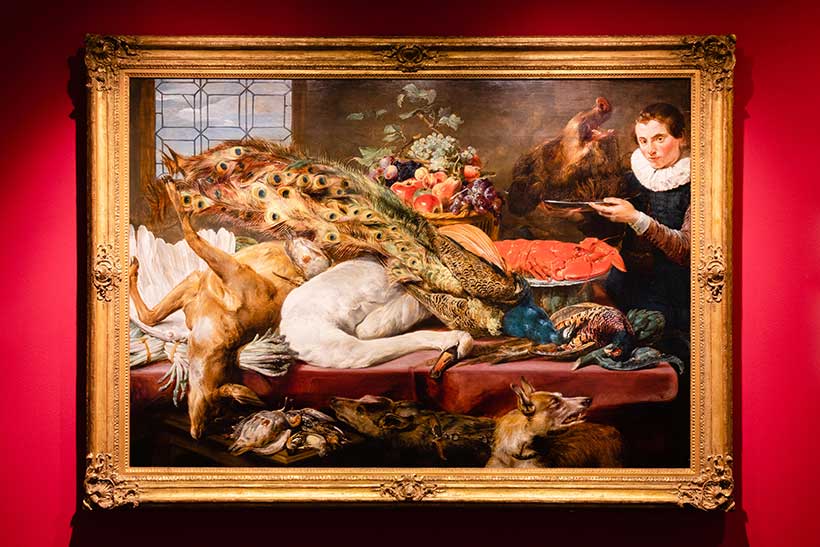
Larder with a Servant—Frans Snyders. On display in the Mead Art Museum as part of the Embodied Taste exhibit.
I don’t know how I got here. I was a freshman in a 300-level anthropology seminar, “Eat! An Exhibition Seminar at the Mead,” and I never expected to be spending my first-ever last day of classes at the opening reception of an exhibition I helped create. I am so very thankful for this opportunity, the people I’ve met and the things I’ve learned. The fact that I was trusted to create an exhibit in the Mead Art Museum is something that I will never forget and cherish forever.
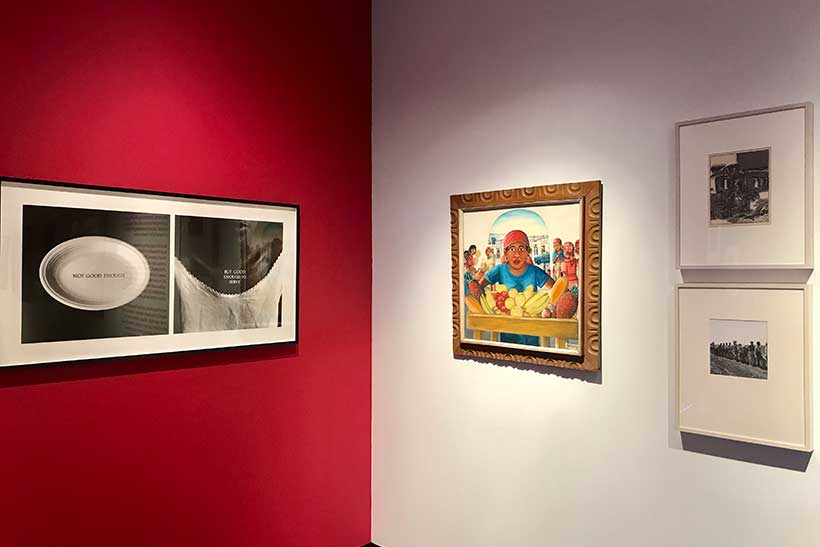
Left to right: C-Ration—Lorna Simpson; Untitled Fruit Vendor—Wilson Bigaud; (top) The Harvest—Aleksei Il'ih Kravchenko; (bottom) Migrant Pea Pickers—Dorothea Lange.
This exhibition, “Embodied Taste,” is on view at the Mead through July 26. It is a fully collaborative project that came about through hours of reading, discussing, viewing, sharing and dedicated thinking. Our class began by reading about the historical, social and economic importance of food in creating modern society. In addition to reading about food and eating, we also read about curating exhibits and displaying art. After reading the selected texts, we convened every Wednesday of fall semester and discussed what had we learned, why it was important and how it impacted our overall project. We debated different perspectives on food as a colonial tool, a necessary aspect of life and an economic signifier, and I think it is safe to say that every one of us altered our thoughts on the universally understood concepts of food and eating.
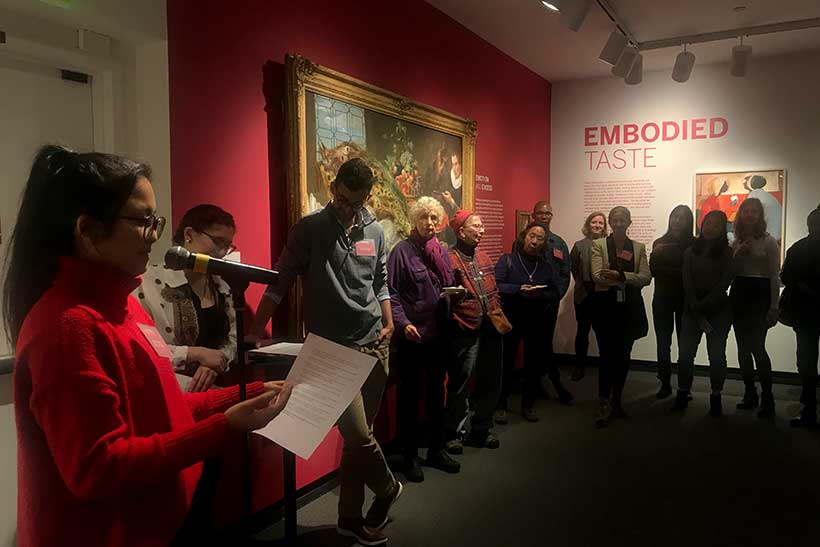
From the opening reception for Embodied Taste, on display in the Mead Art Museum, December 11, 2019 - July 26, 2020.
Sitting around a table as a group of 16 students and two instructors, we tossed out new ideas to be dissected and evaluated—and eventually incorporated into the whole of the exhibit. Our group’s creativity and flexibility, when structured around a central theme and idea, brought the exhibit to life.
From day one we also went to the Mead to observe art. We practiced analyzing art to understand why a particular work is impactful and what value it would add to the exhibit. Additionally, we each wrote two object reports that combined personal responses to art with academic research that would help decide what art from the Mead’s collection made the final cut for the exhibit. We also helped write label text.
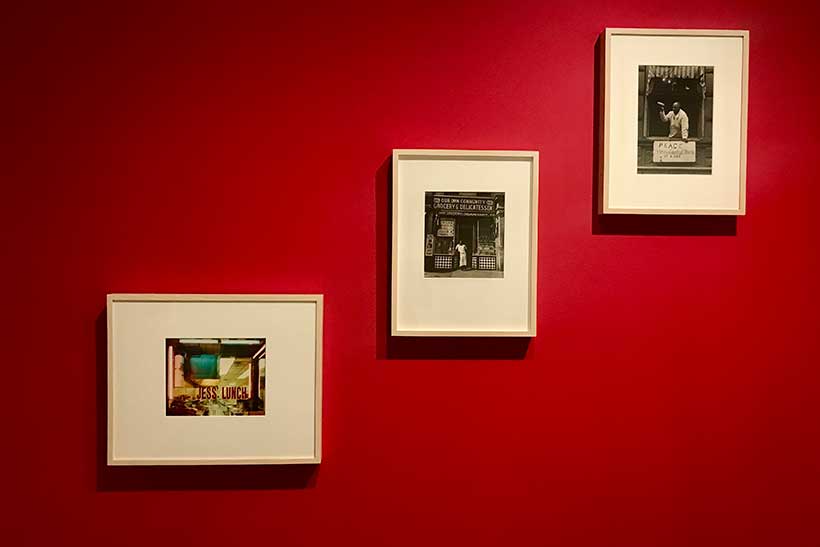
From Left to right: Window at Jess's Lunch. US 11 & 33. Harrisonburg, Virginia, 1998—Jim Dow; Grocery Store—Aaron Siskind. Peace Meals—Aaron Siskind.
Throughout the semester our class took advantage of some very special opportunities, of which viewing beautiful artwork up close and personal in the Mead was just one. In September we traveled to New York City, where we went on a walking food truck tour and visited the Museum of Food and Drink and the Metropolitan Museum of Art. These experiences influenced our communal understanding of food as a social and historical subject. This trip deepened our understanding of the relative nature of food and art, allowing us to better connect the two concepts in the exhibit.
Our two instructors were Amy Cox Hall, visiting assistant professor of anthropology, and Emily Potter-Ndiaye, the Dwight and Kirsten Poler and Andrew W. Mellon Head of Education and Curator of Academic Programs, Mead Art Museum. We also benefited from guest lecturers including Kiara Vigil, assistant professor of American studies; Mike Kelly, head of archives and special collections; and Kendra Weisbin, associate curator of education at the Mount Holyoke College Art Museum. All helped our class connect our project more directly to Amherst and understand the importance of curation in a technical sense.
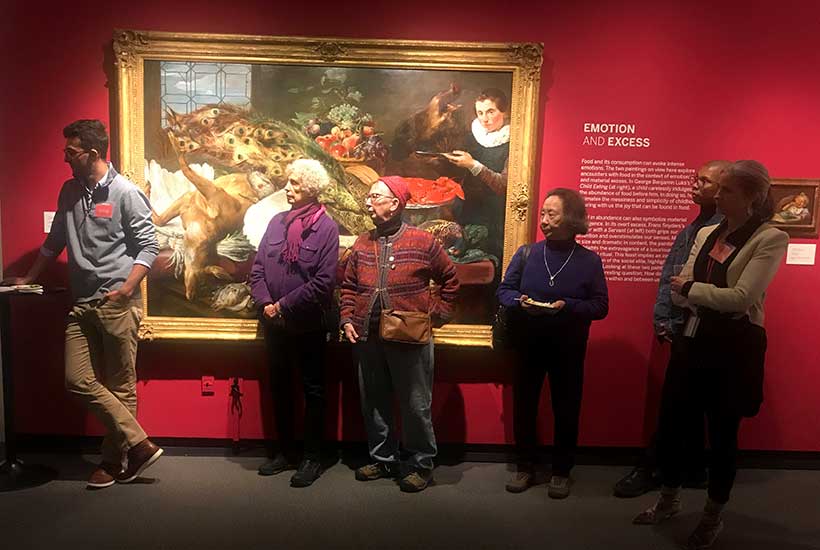
From the opening reception for Embodied Taste.
By late October we were beginning to finalize parts of the exhibit: the title, our big idea and the art we would show. All of these decisions were made with the input of every student. We then divided the artworks, archival materials and objects into six groups and divided ourselves into six groups, too. The groups generally worked autonomously to decide on the placement of individual pieces on the walls, to write the text accompanying the selected works and to develop interactive elements in each section.
My peers and I greatly enjoyed creating the “Embodied Taste” exhibit. I hope that visitors to the Mead leave with a new perspective on food, eating and the cultural traditions associated with those concepts.